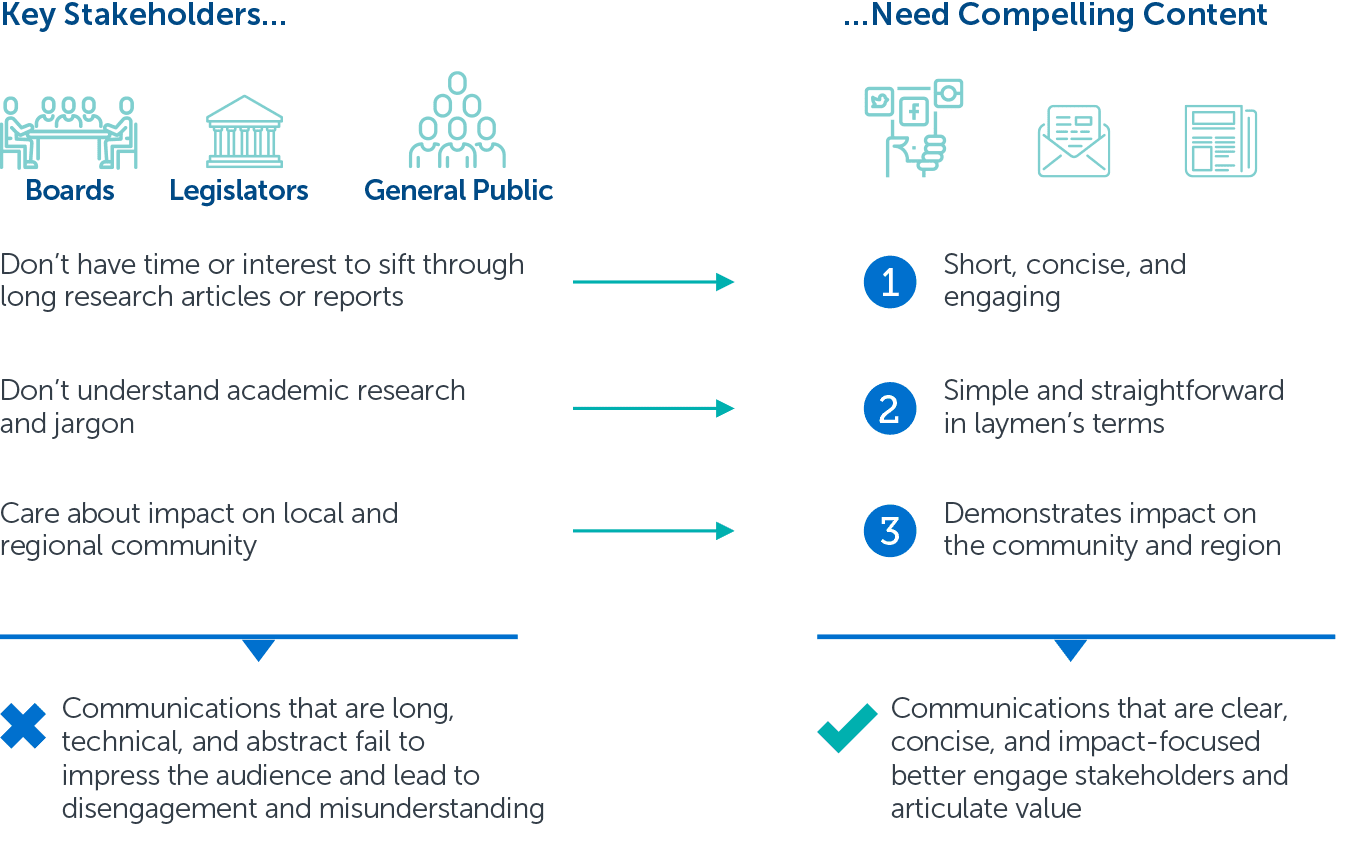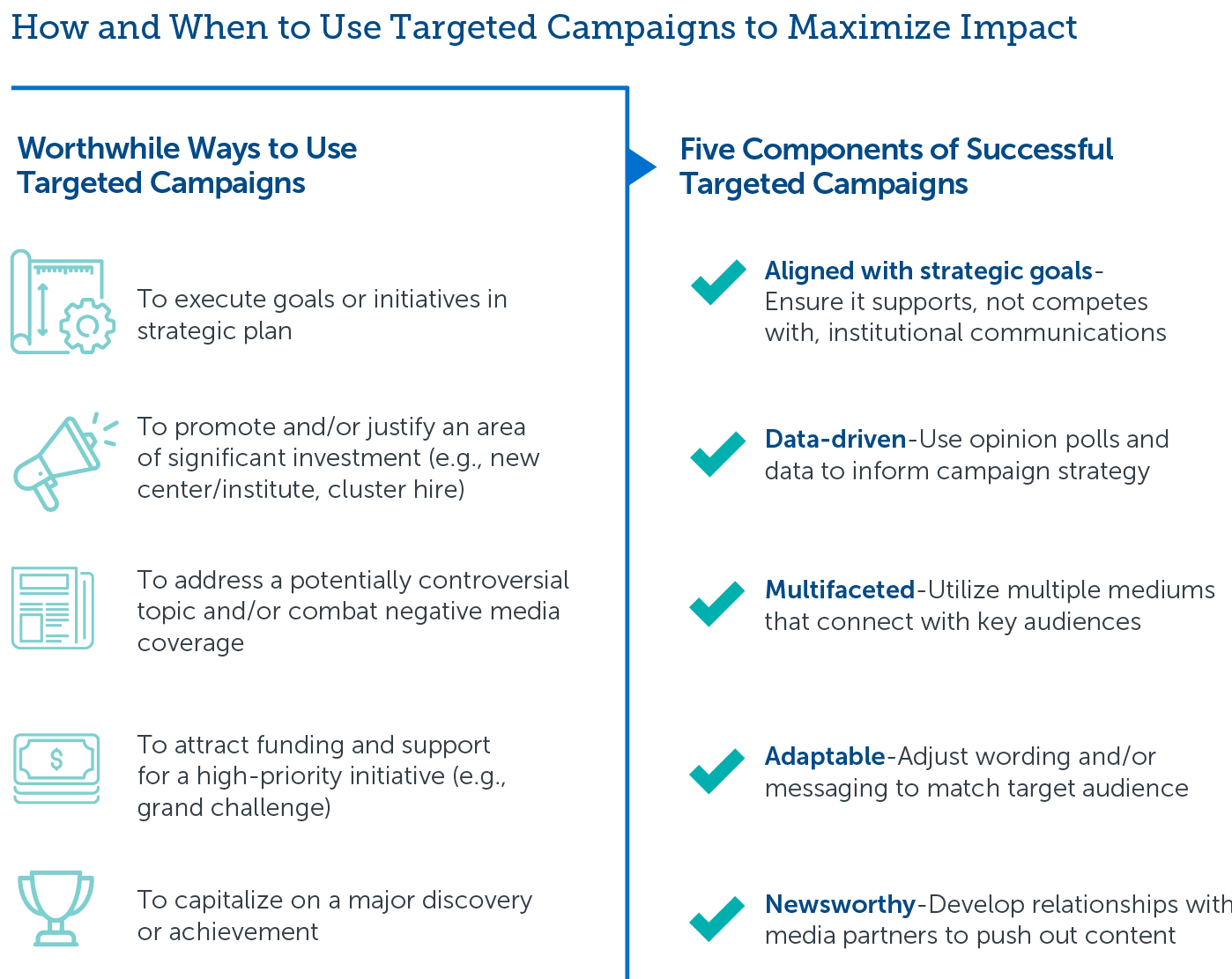Communicate the Value of University Research to External Stakeholders
As federal research funding growth stagnates, universities need to appeal to a broader set of stakeholders for support, including industry partners, philanthropic donors, and the general public. This requires new strategies to communicate the value of research to non-academic audiences who have different research interests, priorities, and levels of understanding.

Assess your current communications capacity
There are a variety of obstacles that make it challenging to communicate the value of research, and they may differ from institution to institution. To diagnose the current state of research communications on your campus and identify opportunities for improvement, use our research communications self-assessment from our Research Communications Toolkit.

Enhance faculty and staff communication skills
An effective research communications strategy requires both faculty and staff buy-in. Unfortunately, decentralized structures and competing priorities hinder staff effectiveness and faculty engagement.
To improve campus-wide efforts, leaders must equip faculty and staff with tools for communicating research to non-expert audiences. Use our media conversations planning worksheet from our Research Communications Toolkit to help faculty and staff prepare to speak with reporters.

Build skills and foster engagement

Develop compelling collateral and programs
External stakeholders do not understand academic jargon and are uninterested in long research articles. Research offices should create and share concise content that demonstrates the impact of research in a relevant way for external stakeholders. To create a one-page fact sheet that shows research impact, use our template from our Research Communications Toolkit.


Use events and collateral to connect with your audiences

Optimize digital communication channels
Research offices need to establish an ongoing communications presence to build name brand recognition among the public. This is best done through online platforms like research websites and social media. To learn how to leverage different platforms to promote research, read our guide on social media in Tool 5 of our Research Communications Toolkit.

Upgrade your research website
-
Learn about four key components of effective research websites
To better connect with audiences and increase impact, university research leaders should ensure their websites: 1) engage with visuals, 2) target specific stakeholders, 3) highlight unique strengths, and 4) include meaningful metrics. Check out our infographic to get implementation strategies.
-
Identify opportunities for improvement with our checklist
Research websites are a key communications channel. Yet, our audit of 50 institutions’ sites showed that most schools are not getting full value from their web presence. Take our self-audit to assess how your research website stacks up.
Launch targeted campaigns in priority areas
Universities should use more intensive and customized communication efforts to advance strategic research priorities. To determine when and how to launch targeted campaigns, research leaders can use the checklist below and examples from Washington State University in Tactic 8 of our Telling the Story of Research study.


Evaluate efforts to refine communication strategy
Too often, university leaders are not sure whether their approach is working. Institutions should use multiple methods to assess their efforts so they can adjust their approach accordingly. The first step is to identify clear metrics of success that align with their communication objectives and channels. Learn more about using strategic scorecards in Tactic 13 of our Telling the Story of Research Study.

This resource requires EAB partnership access to view.
Access the roadmap
Learn how you can get access to this resource as well as hands-on support from our experts through Strategic Advisory Services.
Learn More